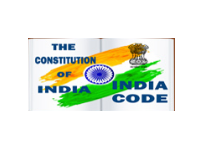State Reorganization
Introduction
State Reorganization Acts were enacted in November 2000 for the purpose of reorganization of the then existing States of Uttar Pradesh, Madhya Pradesh and Bihar. As a result, UP was bifurcated into UP & Uttarakhand, MP became MP & Chhattisgarh and Bihar was reorganized into Bihar and Jharkhand. As per provisions of these three Acts, Central Government is vested with the authority for allocating services of personnel between the successor States in connection with the State Re-organisation. Other than the employees of All India Services, State Government employees of State Cadre, are allocated between the successor States by the State Re-organisation (SR) Division in the Department of Personnel & Training.
At present allocation of State Government employees between the successor States of Uttar Pradesh / Uttarakhand, Madhya Pradesh/ Chhattisgarh and Bihar/Jharkhand, is in progress.
Work Allocation
The State Reorganisation (SR) Division in the Department of Personnel & Training is entrusted with the responsibility of allocation of the State Government employees of State cadre, who have all state transfer liability, other than All India Services, between the successor states in accordance with State Reorganisation Scheme. Employees serving in villages, tehsil, districts, divisions and regions - who are normally transferred within such areas and part of such territorial cadres and employees appointed for Projects or Undertakings, etc. are not covered by the scheme of State Reorganisation. Allocation of All India services between the successor States are done by their cadre controlling authorities i.e M/O of personnel(AIS Division) for Indian Administrative Service (IAS), M/O Home Affairs for Indian Police service (IPS) and M/O Environment and Forests for Indian Forest Service (IFS). They therefore, do not come under the SR Division..
Contact Officers
| Name. | Designation | Address | Tele.No | |
|---|---|---|---|---|
| Smt. Archana Varma | Joint Secretary | North Block, New Delhi-110001 | 011 2309 3668 | jsata[at]nic[dot]in |
| Smt. K. Kipgen | Director | Lok Nayak Bhawan, Khan Market, New Delhi-110003 | 011 2462 3711 | kimbuong[dot]k[at]nic[dot]in |
| Shri A.K. Malhotra | Under Secretary | Lok Nayak Bhawan, Khan Market, New Delhi-110003 | 2465 1898 | dopt[at]nic[dot]in |
| Shri R. Venkatesan | Under Secretary | Lok Nayak Bhawan, Khan Market, New Delhi-110003 | 2462 4235 | venkatesan[dot]r[at]nic[dot]in |
| Shri Manavendra Pratap | Section Officer | Lok Nayak Bhawan, Khan Market, New Delhi-110003 | 2462 6024 | manav[dot]pratap[at]nic[dot]in |
| Shri Abdul Gufran | Section Officer | Lok Nayak Bhawan, Khan Market, New Delhi-110003 | 2462 6024 | abdul[dot]gufran[at]nic[dot]in |
Background
The States of India were originally formed as a result of historical accidents and circumstances. After independence there has been a growing demand for reorganisation of the States on more rational basis, in the context of not only from financial, economic and administrative management of independent India but also due to the growing importance of regional languages. For the first time, the States Reorganisation Commission (SRC) was constituted in 1953 to go into this problem and to recommend the principles and broad guidelines on which the States can be reorganised. The Commission submitted its report in September, 1955. To give effect to the scheme of reorganisation which emerged from the consideration of the proposals contained in the Report, the States Reorganisation Act, 1956, was enacted by the Parliament under Article 4 of the Constitution of India. The new States formed as a result of the reorganisation of States in 1956 are Andhra Pradesh, Bombay Kerala, Madhya Pradesh, Madras, Mysore, Punjab and Rajasthan. Thereafter the Parliament had also enacted various Reorganisation Acts from time to time i.e the Bombay Reorganisation Act in 1960; The Punjab Reorganisation Act in 1966; the State of Himachal Pradesh Reorganisation Act in 1970 and North-Eastern States reorganisation Act in 1971. The latest in this category are the Reorganisation Acts of Uttar Pradesh, Madhya Pradesh and Bihar which were enacted by the Parliament in November, 2000.
Basis of Allocation
The strength of Employees / vacancies existed as on the Appointed Day is the base for allocation of posts between the successor States. The appointed day for Uttar Pradesh, Madhya Pradesh and Bihar are as under:-
| Sl.No. | State | Appointed day |
|---|---|---|
| 1 | Madhya Pradesh | 01.11.2000 |
| 2 | Uttar Pradesh | 09.11.2000 |
| 3 | Bihar | 15.11.2000 |
Criteria of Allocation
The broad principle of allocation of State cadre employees which inter alia include allocation first by option, followed by domicile (Home District) and lastly by inclusion of junior most personnel in the reverse order of seniority. If the number of posts allocated to a successor States are more than the total number of optees and domicile (Home District), in order to fill up the balance posts, the employees lower down in the seniority position in the cadre are considered for allocation even against their options. Option once exercised by the employees is not reversible. Keeping in view the resentment expressed by the employees who were allocated on domicile and juniority basis against their willingness, several exceptions were made to the guidelines to facilitate certain class of employees to be allocated to the States of their option.
| Sl No | Categories | Details | |
|---|---|---|---|
| (i) | Women employees | - | allocated based on option. |
| (ii) | Class IV employees | - | allocated based on option. |
| (iii) | Handicapped persons | - | allocated based on option. |
| (iv) | Spouse policy | - | both the spouse to be allocated to a single successor State based on their option. |
| (v) | Medial hardships cases | - | allocation is based on option in the following medical hardship cases. |
| (a) | Cancer patient | - | Self or family* |
| (b) | Blindness | - | Self only. |
| (c) | Heart Bye-pass surgery | - | Self only if done within two years from the date of representation is considered bythe Committee. |
| (d) | Kidney Transplantation / Kidney failure and continuing on dialysis | - | Self or family*. |
| (e) | Mental illness | - | Self or family*, restricted to indoor treatment for at least three months. |
| (f) | Bhopal Gas Tragedy | - | allocated based on option only if the compensation amount received by self/family is more than Rs.50,000/- or more. |
| (g) | SC/ST Employees | - | Allocated based on domicile or on option basis. |
* family include spouse, dependent children and dependent parents.
Process of Allocation
(a) Framing of guidelines on Reorganization
The Reorganization Acts only provide for the brief outlines and fundamental principles of reorganization. It was therefore, necessary to work out the modalities and frame the detailed guidelines to carry out the reorganization process. Accordingly, a meeting was convened on 06.09.2000 under the chairmanship of the then Secretary(Personnel), Govt. Of India, in which the Chief Secretaries of the Reorganized States, participated. As per decisions taken in the meeting, basic guidelines to regulate the process of reorganization, were issued under D.O. letter dt. 13.09.2000 in order to carry out provisional allocation of employees, till they are finally allocated.
(b) Constitution of State Advisory Committee
The Reorganization Acts provide for setting up of advisory committee(s) to assist the Central Govt. in the reorganization process. Subsequent to issue of the basic guidelines, the Central Govt. decided to constitute State Advisory Committees to assist it in the reorganization process. It laid down the manner in which the committee was to be constituted and fixed the time frame for it to follow in the D.O. letter dt. 22.12.2000. State Advisory Committees (SAC) were constituted with a senior retired civil servant of the rank of Chief Secretary or equivalent as Chairman with Chief Secretaries of the successor States as Members to assist the Central Government to discharge of its functions with regard to allocation of State Government employees, as provided in the Re-organisation Act. However, it was left to the State Advisory Committees to formulate the detailed and State specific guidelines for allocation of employees between the successor States.
(c) Ratio of allocation of posts
The posts of the un-divided State are allocated between the successor States in a specific ratio arrived by the State Advisory Committee, keeping in view the posts relatable to the area of the successor State (field posts) and also a fixed percentage of Hqrs. Posts. The posts located in the geographical area, go to the successor States, whereas the posts of the headquarter are distributed in the ratio of the districts.
(d) Allocation of Personnel
Personnel and vacancies are allocated between the successor States in accordance with the ratio finalised by the State Advisory Committee by applying relevant provisions as existed on the appointed day.
(e) Finalisation of TFAL & RFAL
Based on the information provided by the concerned Administrative Departments, the State Advisory Committee issues Tentative Final Allocation List (TFAL) enlisting employees proposed for allocation on option, domicile and juniority basis, inviting objections from the employees. The objections received against TFAL within one month period are considered by the State Advisory Committee as per guidelines. The Committee recommends the Revised Final Allocation List (RFAL) to the Central Government for consideration.
(f) Final Allocation
Based on the recommendations of the State Advisory Committee and after ensuring that the recommendations are as per the Guidelines on Reorganization, the Central Government issues final allocation of personnel between the successor States.
Status of Allocation Process In Uttar Pradesh / Uttrakhand, Mdhya Pradesh / Chattisgarh, Bihar / Jharkhand
It may not always be possible to allocate the employees based on their options. This happens when there are more optees than posts available in a successor state. When less optees are available, employees are allocated to the successor States based on their ‘domicile against the rest of the posts. If vacancies still remained, employees are allocated on ‘juniority’ category in the reverse order of seniority. Allocation on juniority basis and to some extent on the basis of domicile, created resentment amongst such employees, as they were forced to join a State against their willingness. This led to the filing of large number of Court cases in various High Courts. The Hon'ble Supreme Court of India in Civil Appeal No.3307 of 2007 filed by Shri Indradeo Paswan Vs Union Government of India has up-held the principal laid down by the Hon'ble High Court of Bihar in the case of Shri Prakash Chandra Sinha V/s Union of India and Others (2003(4) J.C.R. 165) which inter alia states that unless the court is compelled to interfere on the basis of a clear illegality or wednesbury unreasonableness, the court should leave the allocation of personnel in various services as it was and that acceptance of individual grievances, unless clear cases are made out, would make allocation a never ending process and that would not be in the interests of the reorganized States or of the employees. At present the allocation process in Uttar Pradesh has almost come to an end except for a few small departments and some deferred cases. An Advisory Committee under the chairmanship of the Joint Secretary in charge of SR Divn. is in existence to complete the residual allocation matters.
Brief status of allocation in Madhya Pradesh / Chhattisgarh, Bihar / Jharkhand and Uttar Pradesh / Uttarakhand are as under:
Madhya Pradesh /Chhattisgarh
The allocation work has been completed in 2004 by issuing the final allocation orders of more than 1,60,000 employees of erstwhile State of Madhya Pradesh. To redress the grievances of 1867 petitioners a Committee was constituted in 2005 and its recommendations were implemented in 2006. In compliance with the directions of the Honble High Court of Chhattisgarh at Bilaspur in the case filed by Shri B. R. Godbole and 89 other associated writ petitions, a Committee was set up in 2007 under the Chairmanship of Joint Secretary, SR Division to look into the representations of individual employees who were not satisfied with their allocation. So far, twenty six meetings of the Committee took place and recommendations of the Committee have been Implemented.
The meetings of the Committee are held regularly to look into the grievances of petitioners in compliance of courts order, SC/ST, physically handicapped, women employees, spouse and medical hardships cases etc.
Uttar Pradesh / Uttrakhand
A total of 10,98,000 personnel were to be allocated between the successor States of Uttar Pradesh and Uttarakhand. The SAC took a policy decision to issue orders of allocation only for these personnel who are allocated to the successor State of Uttarakhand, whose number is approximately 1, 40,000. Out of this, 40,000 employees belonging to the Hill Sub Cadre were allocated to Uttarakhand by a single order dated 11.09.2001 since the hill districts, where the hill-cadre posts are located, went to Uttarakhand. The rest of the employees are deemed to be allocated to Uttar Pradesh. The task of the SAC, then has been to allocate 1,00,000 employees to Uttarakhand. The State Advisory Committee was initially set up in January 2001 with Shri G. N. Mehra, IAS(Retd.)(UP-1955) as its Chairman. The committee was given various extensions and had 80 meetings till it was discontinued w.e.f. 01.07.2010. Shri S.A.T. Rizvi, IAS(Retd.)(UP-1965) was the last chairman of the SAC. On the basis of the recommendations of the Committee, final allocation orders have been issued by the Central Government in respect of 105 Departments / Sub-Departments. Final allocation orders are pending in respect of some small Departments / Sub-Departments including some deferred cases for which meetings are being held by the existing Advisory Committee headed by Joint Secretary(SR). The State Advisory Committee was not extended for a long time since March, 2007. To carry on with the pending work, a Committee was constituted under the chairmanship of Dr. S.K. Sarkar, the then Joint Secretary, DoPT to consider the representations in connection with the allocation of the employees between the successor States of U.P. and Uttarakhand. The Committee was mandated to look into the representations received from the employees, department-wise where the allocation process has already been completed. However, this Committee also continued along with the new State Advisory Committee which was constituted in December, 2007. After Dr. S.K. Sarkar became unavailable, another Committee was constituted in December, 2009 under the Chairmanship of Joint Secretary in charge of SR Division. This Committee is existing today and functioning in the absence of the State Advisory Committee which was discontinued with effect from 01-07-2010.
Bihar/Jharkhand
In Bihar, a total number of about 1,08,000 employees were to be bifurcated between the two successor States of Bihar and Jharkhand. Allocation orders of approximately 1,07,000 employees have been issued. Only a few disputed cases are still pending for allocation which are being considered. After completion of the term of the then Chairman, State Advisory Committee on 30.06.2008, a Committee under the Chairmanship of Joint Secretary, SR Division, DoPT was constituted by the Central Government to consider the pending/deferred issues and grievances of the employees. The meetings of the Committee are held regularly to look into the grievances of petitioners, SC/ST, physically handicapped, women employees, spouse and medical hardships cases etc.






 कार्मिक एवं प्रशिक्षण विभागDepartment of
कार्मिक एवं प्रशिक्षण विभागDepartment of 













